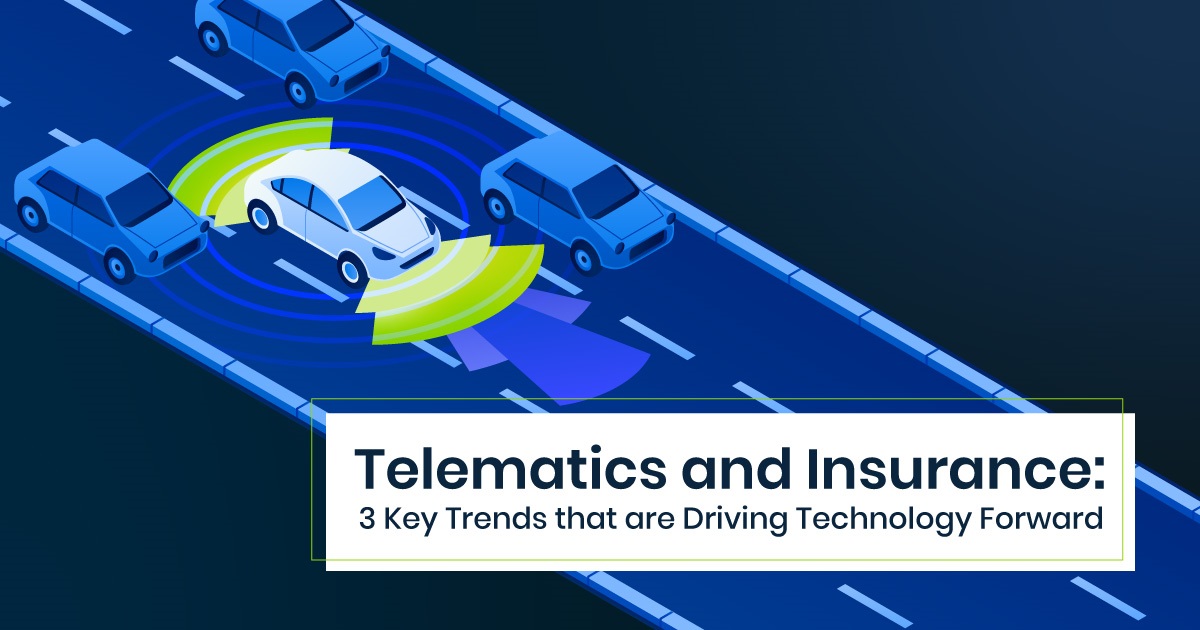What is telematics technology?
The term “telematics” refers to devices that merge telecommunications and information technology. These devices are integrated into automobiles to monitor driving behavior, providing data that insurers can use to help determine risk profiles and rates.
For over a decade, insurers have been experimenting with different ways to leverage telematics technology - tracking mileage, offering consumer discounts, and providing ancillary benefits such as roadside assistance and auto theft recovery. Since those early applications, the use of telematics has grown from a niche feature to a widely available option in auto insurance policies.
Increased use of smart connectivity and the Internet of Things (IoT) continues to drive consumer demand for telematics, which is predicted to become a $231 billion industry by 2025. Carriers are already seeing tremendous growth in the commercial vehicle telematics market, and personal lines are not far behind.
The convergence of a few key industry, consumer, and technology trends is driving the rapid growth of insurance telematics programs.
1. Improved Risk Assessment and Mitigation
Insurance telematics monitor driver behavior and automobile safety, providing insurers with the information needed to better assess driver risk and establish premiums. Instead of relying on broad demographics such as age, occupation, and location, telematics data can more accurately predict risk profiles and appropriately price policies. The data also provides drivers with a report of their behavior, affording them the opportunity to improve their driving habits.
Telematics can also be instrumental in claims investigations. Due to the introduction of crash detection and instant first notice of loss capabilities, telematics can help streamline the claims process, drive down ancillary costs (such as towing), and even combat fraudulent claims. The technology allows insurers to reduce claims-handling cost by an estimated 55% — a key driver of mass market growth, according to the Mordor Intelligence 2019-2024 Insurance Telematics Market report.
2. Increased Opportunities to Meet Consumer Needs
JD Power has reported that 74% of insurance shoppers use websites or insurance aggregators to research insurance companies and get quotes. The fact is, modern consumers are taking the opportunity to actively control the insurance buying experience — including how much they are willing to pay for coverage.
Telematics technology is fueling these opportunities by allowing insurance providers to demonstrate their ability to understand - and deliver - exactly what consumers want. By giving your policyholders more control over their auto insurance rates, coverages, and claims information, you can improve the customer experience and increase brand loyalty.
3. Advanced Connectivity
The mass adoption of telematics in the auto insurance industry can be attributed largely to the rapid development of connected technology — primarily with regard to smartphones. According to Property Casualty 360, although professionally installed telematics devices are still viable and applicable for certain situations and business needs, they’re no longer the only options for capturing high-quality, actuarial-grade telematics data.
With the proliferation of smartphones in America, telematics has become a convenient method of data collection, with the ability to analyze information and compare data of hundreds, or even thousands of users, improving underwriting with greater accuracy and efficiency.
Over 100 million policies are expected to incorporate insurance telematics by 2020. According to the National Association of Insurance Commissioners, usage-based insurance programs will continue to offer a multitude of advantages to insurers and consumers. By increasing affordability for lower-risk drivers, telematic technology gives consumers the ability to control their premium costs by incentivizing them to reduce miles driven and adopt safer driving habits. And fewer miles and safer driving contributes to the reduction of accidents, congestion, and vehicle emissions – which benefits us all.
You might also be interested in:
Will Insurance for Electric Cars Cost More Than Gas-Powered Vehicles?
Sign up for the blog to learn more about the different trends and technologies moving the insurance industry forward.

